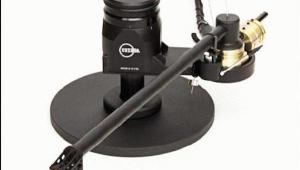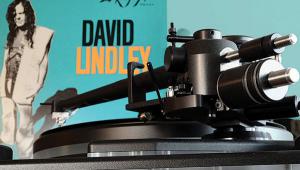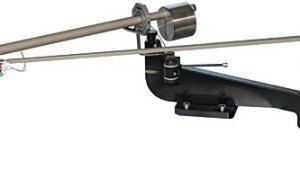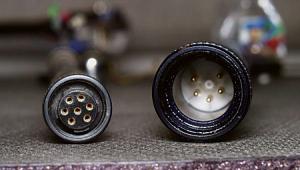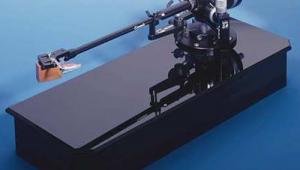Graham Model 2.0 tonearm 2.2 tonearm upgrade
Bob Graham recently announced the 2.2 upgrade of his 2.0 tonearm. The 2.2 features a new bearing system, small changes to the armwand support block, and a new one-piece mounting base. The physical changes are subtle, but the improvement in sound was a significant step up overall, especially in terms of midbass/midrange fullness and high-frequency smoothness.
Owners of 2.0s need not fret: a $300 kit will give you more than 90% of the upgrade. The kit consists mostly of a new, more substantial bearing configuration, which can be added to the 2.0 by unscrewing the old bearing cap and screwing in the new one. The new cap is brass instead of aluminum, and there are changes in the way the bearing is mounted within the cap.
The arm mount is more massive and will displace more of the damping fluid already in the well, so Graham advises users to let the fluid settle after installation, then unscrew the mount to check the fluid level, using the bearing support much like a car engine's oil dipstick. The fluid level should be half to three-fourths of the way up the square flange. Small changes in the amount of fluid will affect the sound, but Graham—and I, after experimenting with the new bearing—caution you against going crazy with the fluid level.
Speaking of which, Graham claims that his new cobalt-blue silicone fluid offers yet another level of sonic enhancement. I haven't yet received a shipment, but I'm sure it will make it easier to determine the fluid level.
Because replacing the bearing is so simple, and switching between the old and new parts requires no change in the arm's setup (except for the amount of fluid), it was easy to compare the new bearing with the old. The upgrade was significant—about the same degree of improvement as the one that upgraded the 1.5 arm to the 2.0, though this one doesn't require you to buy a new tonearm. The sonic improvements were not subtle. The biggest difference I heard was in the midbass, which was now fleshed out and better integrated with the bass and midrange. Graham claims better bass as well, but in my book, bass doesn't get much better than the 2.0's; I noted little improvement there.
The very top was also sweeter, somewhat less analytical, and, some might say, a bit less strident and unrelenting. The overall effect was the transformation of a very good, highly respected tonearm that still left some listeners cold—for its unyielding top end and slightly thin midbass—into one that sounded far more supple, rich, and inviting while retaining all of transient speed and resolution of inner detail that had already placed it in the top echelon of tonearms. The upgrade also delivered improved soundstage width and depth—probably an outcome of the improved midbass.
The 2.2 upgrade is a no-brainer for 2.0 owners. For the totally obsessed, Graham even includes a "2.2" sticker—"like a license-plate registration sticker," he says—to be placed over the "2.0" badge. You can try peeling off the original badge first, but be careful: "Scratches aren't covered by the warranty," warns Graham. Original 1.5 owners can also upgrade, but, according to Graham, they'll have to also get the 1.5t upgrade (tungsten side weights), and the final results will not be quite as impressive—the main pivot housing on the original arm was lighter, made of aluminum instead of the 2.0/2.2's tungsten alloy.
Graham also recently announced the IC50, a new DIN/RCA cable, which he says better complements the 2.0's newly refined sound. The solid silver wire is specially wound and terminated in a new DIN connector and low-mass RCA plugs. The price will be in the "$650-$700" range.—Michael Fremer
- Log in or register to post comments

